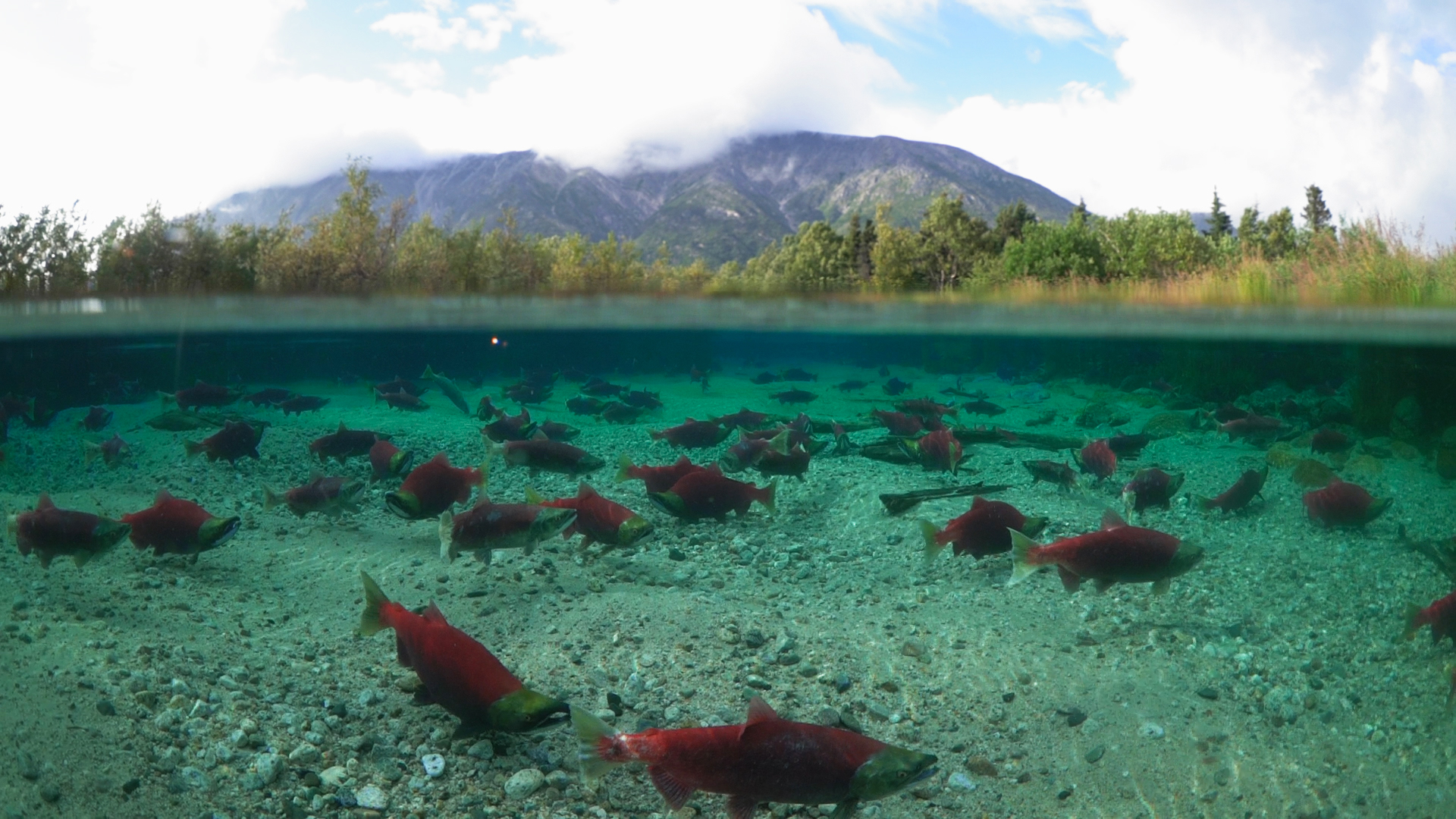Elation. Relief. Exasperation. Pride. And anxiety.
No wonder I experienced a full range of feelings after the Environmental Protection Agency safeguarded the Bristol Bay watershed from the proposed Pebble Mine in Alaska on Jan. 30. The nearly 20-year battle to close the door on the massive mine was an emotional and psychological rollercoaster for many who vacillated between hope and despair.
Here’s why I and many thousands of folks who have done much more than me to stand up to corporate greed in this instance are overjoyed.
The EPA ruled that the mine and the volume of toxic chemicals it would produce would threaten the watershed. Technically, the EPA issued a formal Section 404 (c) Clean Water Act veto on the proposed project, prohibiting and restricting the use of certain waters—in the South Fork Koktuli, North Fork Koktuli, and Upper Talarik Creek watersheds—in Bristol Bay as a disposal site for the discharge of dredged or fill material associated with mining at the Pebble deposit. Additionally, the Final Determination prohibits future proposals to develop a mine at the Pebble deposit that have impacts similar or greater than the mine plan denied by the Army Corps of Engineers in 2020.
This final ruling means the chances of Pebble ever going forward are very, very slim. Yes, the mine’s owners will try to litigate this and influence state and federal regulators (this has failed before). But it’s a very long shot. More on that later.
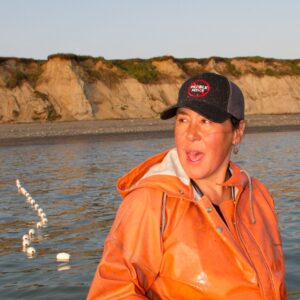
Melanie Brown in her element on the lease where her great grandfather taught her to fish.
I have been to Bristol Bay twice. I’ve learned to setnet fish with one of my sheroes, Melanie Brown, a Yupik commercial and subsistence fisherwoman who taught me how to pick sockeye out of a net on the lease where her great grandfather taught her how to fish.
“EPA has made a good decision for Bristol Bay’s First People and fishermen,” said Melanie, who is also an organizer for Salmonstate. “May this stronghold for wild salmon thrive far beyond our existence and provide inspiration for the continuation of wild caught fisheries around the world.”
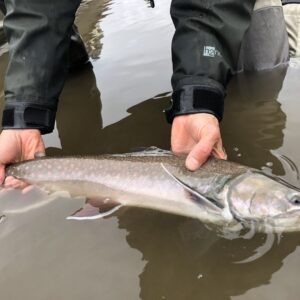
Bristol Bay’s beauty reflected in the bright colors of a soon-to-be-released Dolly Varden.
I have flyfished in and around the Naknek River and several of the smaller creeks in the watershed for sockeye, king salmon, gigantic freshwater rainbows and Dolly Varden.
I have interviewed Indigenous elders and community leaders, commercial fishing captains, supply chain leaders, and activists throughout the Pacific Northwest who have been fighting this battle for nearly two decades. I’ve flown over the project site, which is an unsightly cluster of tents, Quonset huts and other temporary structures that scar the landscape.
I’ve written many thousands of words in blogs and articles, produced podcasts and coordinated and hosted several national and international webinars about Bristol Bay, the people, the fish, and the need to protect it from Pebble.
I’ve testified on Zoom, in recorded messages, and in writing. I’ve signed God knows how many letters, petitions, and other actions.
So, I feel in my own small way, I have played a role in the movement that led to the current conclusion. And yet, I realize I’ve been fortunate to have met and learned from many people like Melanie who have done so much more than me to make this happen.
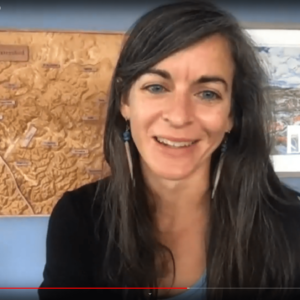
One Fish Foundation Board Member Elizabeth Dubovsky leading a Slow Fish webinar on protecting wild salmon and their habitat in 2020.
Elizabeth Dubovsky is one of those people. Every time I wrote a blog or had a question about policy or market implications, she was generally the first person I contacted. She has spent much of her life with SalmonState, Trout Unlimited and other organizations building community support and successful campaigns to protect Bristol Bay. She recently joined the One Fish Foundation Board of Directors.
“The last decade has been such a rollercoaster for Bristol Bay and for all of us who fought to protect it from the Pebble Mine,” she said. “The EPA’s Final 404(c) Determination gives me hope that, in the end, science and local communities can and will prevail. We have to not lose faith in what we know is right and keep fighting for it, even if the path forward might not always be clear and others might try to knock us down. We also have to remember that we’re stronger when we work together toward shared goals and values – anything is possible.”
That sense of unity is paramount. The coalition of commercial, recreational, and subsistence fishing communities that stood up to Pebble is very uncommon as these interests often compete for resources. Part of what galvanized such a broad coalition that also included environmentalists, chefs, educators and other advocates from around the world, was a generational look to the future.
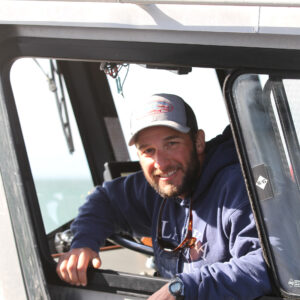
Steve Kurian at the helm of the Ava Jane. Photo: Courtesy Steve Kurian.
“After 20 years of battling to protect clean water in Bristol Bay, the EPA decision to protect this pristine ecosystem has brought great joy to me and my family,” said Steve Kurian, captain of the Ava Jane, which fishes out of the Naknek River. He and wife Jen run Wild for Salmon and Pride of Bristol Bay. “There is now hope that my son or daughter will be able to fish these waters with their kids some day and provide the same sustainable wild sockeye salmon to their customers.”
One common emotional thread among those who have fought so long and hard to protect Bristol Bay is love, for the place, the people, the fish.
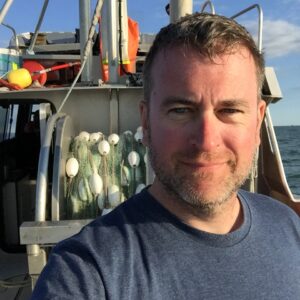
Filmmaker Mark Titus on deck in Bristol Bay. Photo courtesy Mark Titus.
“I first came to Bristol Bay in 1991 to work a summer job in a salmon processing plant. I ended up falling in love. In love with Alaska, in love with her people, in love with the hard work and wilderness and wild salmon still teeming in her vast and wild rivers,” said filmmaker Mark Titus. “I’ve spent the last 13 years telling this love story in my films, The Breach and The Wild. With the EPA’s decision to veto the proposed Pebble Mine, I feel a sense of relief – like a physical sense of collapsing into my favorite chair after a long day of toil. Mostly though, I feel gratitude – to the Yupik, Denaina, Aleutiq and Athabascan people of Southwest Alaska who led the grinding effort to protect the irreplaceable land, waters and salmon of Bristol Bay over these last 30 years.”
I am eternally grateful to all of those who have inspired me to dig in on this issue. They inspired me to do more to raise awareness on a national scale. I now feel a special kindred spirit to the place, even if I do live on the other side of the continent. This is also why I feel a strong sense of relief. This has been a long time coming.
So why do I feel some anxiety?
First, there’s an estimated $500 billion dollars of mineral deposits in the Bristol Bay watershed. That’s a huge temptation. As Mark Titus said, “And in the eddy of this river of celebration, I need to remind myself that we can’t ever let our guard down. Just last week a new mining operation filed a claim in Bristol Bay’s headwaters. As long as that ore exists in the ground, we must be ever-vigilant.”
What Bristol Bay needs now is permanent protections from all extractive mining and industrial development, likely in the form of Congressional action. The momentum behind that effort continues.
The second reason for some anxiety is that Pebble is just one mine in one ecologically sensitive area. There are thousands of extraction projects either in development or operation that threaten priceless natural resources around the world.
For example, the Donlin mine is a massive proposed gold mine that threatens the Kuskokwim River watershed and many Indigenous communities that depend on the Alaska river’s clean water to support their lives and the salmon that feed them. Also, the Biden Administration announced on March 13 its approval of the Willow Project to extract up to 180,000 barrels of oil a day from Alaska’s North Slope. Some Indigenous community leaders fear the impact on caribou, marine ecosystems, and subsistence lifestyles.
To be sure, there is much work to be done. However, the EPA’s decision on Pebble reinforces Elizabeth Dubovsky’s statement that a strong, united, and determined collective can make a big difference when no option seems possible. My hope is that the incredible unity of diverse voices behind the coalition defending Bristol Bay, founded on a shared passion to protect natural, life-sustaining resources, can serve as a blueprint for engaged, effective opposition to similar projects, like Donlin, Willow, and countless others.
Stay tuned!
Here is a link to the Stop Pebble Mine Now website, which is a great resource for the background behind the battle to protect Bristol Bay. There you can sign up to receive updates as to what is happening.
Here is a link to SalmonState, which provides great information about Pebble, and other threats to critical salmon habitat.
Follow these links to hear One Fish Foundation interviews with some of the folks mentioned above and others from around Bristol Bay:
- Melanie Brown, community organizer with SalmonState and indigenous commercial fish harvester out of Naknek, AK. Video on YouTube. Audio-only download.
- Steve Kurian, captain of the F/V Ava Jane driftnetter fishing out of Naknek and co-owner of Wild for Salmon, a retail and wholesale operation based in Pa. Video on Youtube. Audio-only download.
- Kat Carscallen, commercial fisherwoman and executive director of Commercial Fishermen for Bristol Bay: Video on Youtube. Audio-only download.
- Nanci Morris Lyon, co-owner, Bear Trail Lodge in King Salmon. She’s been fighting Pebble since about the time her daughter, Rylie, now a lodge guide, was born. Video on Youtube. Audio-only download.
- Norm Van Vactor, CEO of Bristol Bay Economic Development Corporation and long time Bristol Bay resident, fisherman, and processor. Video on YouTube. Audio-only download.
- Gayla Hoseth, director of natural resources with Bristol Bay Native Association, Second Chief of the Curyung Tribal Council, and subsistence fish harvester. Video on YouTube. Audio-only download.


